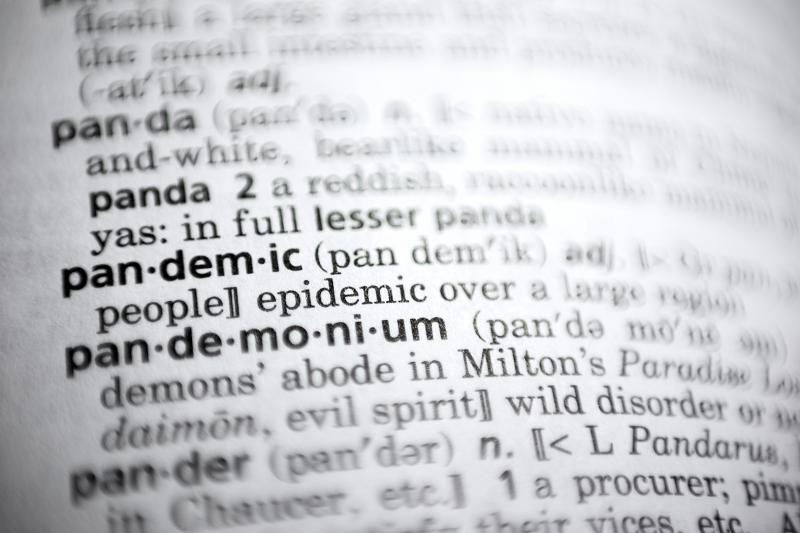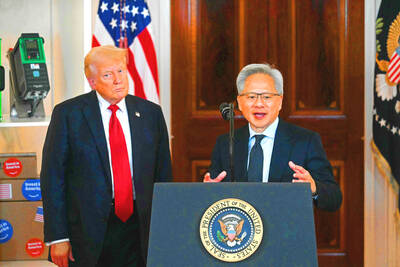If you were to choose the most predominant word for this year, which word would it be? Early this month, the authoritative Merriam-Webster Dictionary announced “pandemic” as its word of the year. According to AP, when the WHO declared the COVID-19 outbreak a global pandemic on March 11, searches for the word “pandemic” on the site spiked.
Dictionary.com has also named “pandemic” its word of the year. The word is defined by the Web site as a disease “prevalent throughout an entire country, continent, or the whole world; epidemic over a large area.” In mid-November, Collins Dictionary picked “lockdown” as its word of the year following a dramatic increase in usage during the spread of the coronavirus.
Meanwhile, Japan’s “Sanmitsu” approach to tackling the pandemic has become its buzzword for 2020. Known in English as “three Cs,” the term refers to three situations that the government has encouraged people to avoid in order to prevent the transmission of the coronavirus, namely confined spaces, crowded places and close-contact settings.(Eddy Chang, Taipei Times)

Photo: AFP 照片:法新社
如果要你選出今年最熱門的字,你會挑哪個字?本月初,權威英語字典《韋氏字典》將「pandemic」(大流行、流行病)列為年度熱門單字!據美聯社報導,世界衛生組織在三月十一日正式宣告,武漢肺炎(新冠病毒,COVID-19)已成為全球性流行病,該字典網站上搜查這個字的次數即大幅激增。
線上字典Dictionary.com亦宣布,將該字列為年度單字。該知名網站對這個字的定義為︰「一種極為盛行的疾病,傳染遍及全國、全洲、甚至全世界;也就是大範圍傳染病。」而在十一月中,英國《柯林斯字典》選中「lockdown」(封鎖、封城)為年度單字。因為隨著新冠病毒散播至全球,這個字的使用頻率也出現戲劇化暴增。
同時,日本防疫措施新詞彙「三密」則成為二○二○年流行語,英文簡稱「3C」。「三密」是指日本政府為預防感染,鼓勵民眾盡量避免的三種情況——密閉空間、密集人群及密切接觸。

Photo: AP 照片:美聯社
(台北時報張聖恩〉

Long before numerals and arithmetic systems developed, humans relied on tally marks to count. These simple, repeated marks — often just straight lines — are one of the earliest and most widespread methods of recording numbers. Archaeological findings suggest that humans began tallying in prehistoric times. During the Late Stone Age in Africa, humans began to carve notches onto bones to create tangible records of quantities. One of the earliest known examples is the Wolf bone, an artifact unearthed in Central Europe in 1937. This bone bears notches believed to be an early form of counting. Even more intriguing

A: In addition to Teng Kai-wei, Taiwanese infielder Cheng Tsung-che was called up temporarily to play for the Pittsburgh Pirates in early April. B: Yeah, Cheng is the 18th player in Taiwan’s baseball history to be moved up to the majors. A: Back in 2002, Chen Chin-feng became the first Taiwanese to play in the Major League Baseball (MLB), followed by Tsao Chin-hui, Wang Chien-ming, Kuo Hung-chih, Hu Chin-lung and Lin Che-hsuan. B: Those pioneers were later joined by Lo Chia-jen, C.C. Lee, Ni Fu-te, Chen Wei-yin, Wang Wei-chung, Hu Chih-wei, Tseng Jen-ho, Lin Tzu-wei, Huang Wei-chieh, Yu Chang,

When Nvidia CEO Jensen Huang revealed on Friday last week that the company is working with the Trump administration on a new computer chip designed for sale to China, it marked the latest chapter in a long-running debate over how the US should compete with China’s technological ambitions. The reasoning has sometimes changed — with US officials citing national security, human rights or purely economic competition — but the tool has been the same: export controls, or the threat of them. Nvidia believes it can eventually reap US$50 billion from artificial intelligence (AI) chip sales in China. But it so far has

Continued from yesterday(延續自昨日) https://www.taipeitimes.com/News/lang In many Western countries, the most common form of tally marks employs a five-bar gate structure: four vertical lines followed by a diagonal slash. To form this group, one begins by drawing four parallel vertical lines, each representing one. For the fifth, draw a diagonal line across the existing four. This diagonal stroke effectively creates a distinct group of five. To continue counting, just initiate a new cycle in the same manner. A set of five tallies combined with a single vertical line next to it represents the number six. Across many Asian countries, the Chinese character